Related Research Articles

The Midland Railway – Butterley is a heritage railway at Butterley, near Ripley in Derbyshire.

The Belmont railway line is an abandoned coal haulage and passenger rail line from Adamstown, New South Wales to Belmont, New South Wales. This was a private railway, being the property of the New Redhead Estate and Coal Company and was generally known as the Belmont Branch. The line closed in December 1991. It has since been converted into a cycleway or rail trail - The Fernleigh Track.
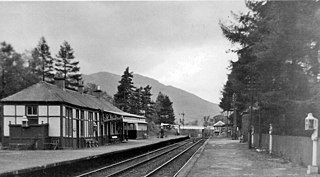
Balquhidder was a railway station around two miles south of Lochearnhead, Stirling (district). It was where the Callander and Oban Railway was joined by the Comrie, St Fillans & Lochearnhead Railway from Crieff.

Wath marshalling yard, also known as Wath concentration yard, was a large railway marshalling yard specifically designed for the concentration of coal traffic. It was set at the heart of the South Yorkshire Coalfield, at Wath-upon-Dearne, approximately halfway between Barnsley and Doncaster, in the United Kingdom. It opened in 1907 and closed in 1988.
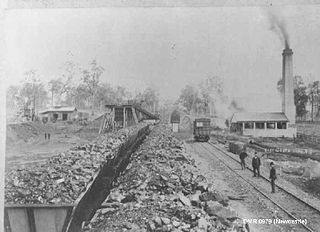
The South Maitland Railway was once an extensive network of privately owned colliery and passenger railway lines which served the South Maitland coalfields in the Hunter Region of New South Wales, Australia and were the second last system in Australia to use steam haulage, having used steam locomotives until 1983.

Ettington railway station was a railway station located one mile to the north of Ettington, Warwickshire, England.
Alton Heights Junction railway station was a short-lived station located south of Lesmahagow in the Scottish county of South Lanarkshire.
The Forest of Dean Railway was a railway company operating in Gloucestershire, England. It was formed in 1826 when the moribund Bullo Pill Railway and a connected private railway failed, and they were purchased by the new company. At this stage it was a horse-drawn plateway, charging a toll for private hauliers to use it with horse traction. The traffic was chiefly minerals from the Forest of Dean, in the Whimsey and Churchway areas, near modern-day Cinderford, for onward conveyance from Bullo Pill at first, and later by the Great Western Railway.
Kenyon Junction was a railway station at Kenyon near Culcheth in Warrington, England. The station was built at the junction of the Liverpool and Manchester Railway and the Kenyon and Leigh Junction Railway. It was situated in the historic county of Lancashire. The station opened in 1830 as Bolton Junction and closed to passengers on 2 January 1961 before closing completely on 1 August 1963. The junction fell out of use when the line serving Leigh was closed in 1969.
The Glasgow, Bothwell, Hamilton and Coatbridge Railway was a railway company in Scotland, built to serve coal and ironstone pits in the Hamilton and Bothwell areas, and convey the mineral to Glasgow and to ironworks in the Coatbridge area. It was allied to the North British Railway, and it opened in 1877. Passenger services followed.

Brayton was a railway station which served as the interchange for the Solway Junction Railway (SJR) with the Maryport and Carlisle Railway (M&CR); it also served nearby Brayton Hall and district in Cumbria. The station was opened by the M&CR and became a junction station in 1870 on the 25 mile long SJR line.
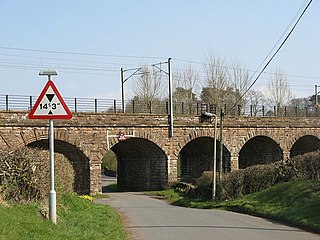
Kirtlebridge railway station was a station which served the rural area around Kirtlebridge and Eaglesfield, north of Annan in Dumfriesshire, Scotland; the location is now within the area of Dumfries and Galloway unitary council.

Lissens Goods station or Lissens Sidings station was a railway freight facility located approximately two miles north-east of Kilwinning, North Ayrshire, Scotland. It served the industrial and agricultural requirements for transportation in the vicinity of Auchenmade and the surrounding rural area on behalf of the Lanarkshire and Ayrshire Railway. Lissens Goods was around seven miles from the Lugton East Junction and the railway workers employed here were supervised by staff from the nearby Auchenmade Station, the nearest passenger and goods station on the up line towards Lugton and Glasgow.

The Busby Railway is a short railway line built on the south side of Glasgow, connecting the small villages of Thornliebank, Giffnock, Clarkston and Busby and later Thorntonhall and East Kilbride with the city. It opened in two stages, in 1866 and 1868, and served industry and encouraged residential development.
The Caledonian Railway lines to Edinburgh started with the main line that reached Edinburgh in 1848 as part of its route connecting the city with Glasgow and Carlisle. The potential of the docks at Granton and Leith led to branch line extensions, and residential development encouraged branch lines in what became the suburbs of Edinburgh. In 1869 a line was opened from Carfin through Shotts giving the Caledonian a shorter route between Glasgow and Edinburgh.
The Caledonian Railway branches in North Lanarkshire built on the Caledonian Railway main line, which opened in 1848. In the following years the considerable increase of iron production and coal extraction in North Lanarkshire led to a progressive expansion of branch lines in the area between the eastern margin of Glasgow and Bellside in the east, and between Coatbridge, Airdrie and Motherwell. Mineral traffic was dominant and for some years passenger operation followed the construction of some of the mineral connections. In 1861 the Rutherglen and Coatbridge line was opened, extended later to Airdrie, rivalling the established Monkland Railways route. In 1869 the connection from Cleland to Midcalder was opened, connecting mineral sites but also forming a new passenger route to Edinburgh.
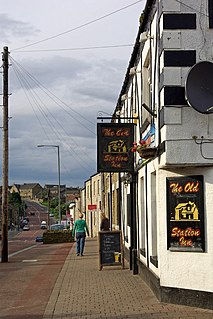
Tow Law railway station served the town of Tow Law, County Durham, England, from 1847 to 1965 on the Stanhope and Tyne Railway.
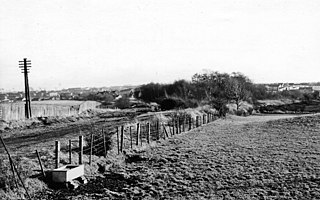
Blackwood railway station served the village of Blackwood, South Lanarkshire, Scotland, from 1866 to 1965 on the Blackwood Junction to Alton Heights Junction Line.
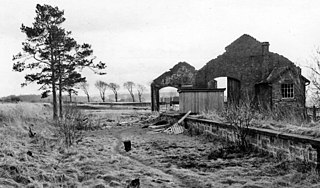
Brocketsbrae railway station served the hamlet of Brocketsbrae, South Lanarkshire, Scotland, from 1866 to 1951 on the Lesmahagow Junction to Bankend Colliery line.

Leith North railway station served the area of Leith, Edinburgh, Scotland, from 1879 to 1962 on the Leith North Passenger Branch.